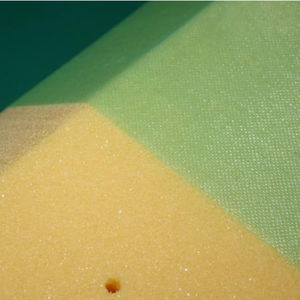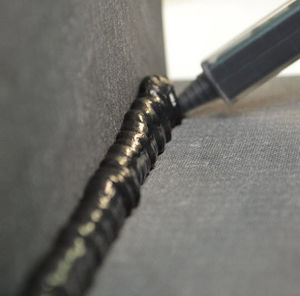
Epoxy resin SF 130FRlaminatingvacuum infusionhigh-performance
Add to favorites
Compare this product
Characteristics
- Type
- epoxy
- Applications
- laminating, vacuum infusion
- Properties
- high-performance
Description
FIRE RETARDANT LOW SMOKE SURFACE FILM
¬ Provides an effective fire retardant surface layer
¬ Compatible with Epoxy and certain Phenolic prepregs
¬ Curable at temperatures as low as 85°C (185°F)
¬ Improves de-moulded surface finish
¬ Can achieve 130°C (266°F) Tg using vacuum bag processing
¬ Excellent drape allowing easy in-mould processing
INTRODUCTION
SF130FR is a black tinted, low temperature curing fire retardant and smoke suppressant epoxy resin surfacing film.
SF130FR can be cured at temperatures as low as 85°C / 185°F, but can also be used for faster manufacture of components through
its 60 minute cure at 120°C / 248°F. SF130FR provides an effective fire retardant layer to be used in conjunction with SE130FR
Prepreg / ST130FR SPRINT™ to improve the surface finish direct from out of autoclave, vacuum only processing.
The resin matrix has been tested in accordance with the stringent
European fire test standard, EN45545, achieving HL2 ratings in
requirement groupings R1 and R7 categories (users must fire test
their unique component laminates to ensure expected fire test
results are achieved).
TYPICAL APPLICATIONS
SF130FR is ideally suited to rail / industrial / commercial marine
craft and civil applications where additional resin is required for
producing an exceptional surface finish in conjunction with other
products in the range.
Catalogs
No catalogs are available for this product.
See all of Gurit‘s catalogs*Prices are pre-tax. They exclude delivery charges and customs duties and do not include additional charges for installation or activation options. Prices are indicative only and may vary by country, with changes to the cost of raw materials and exchange rates.








